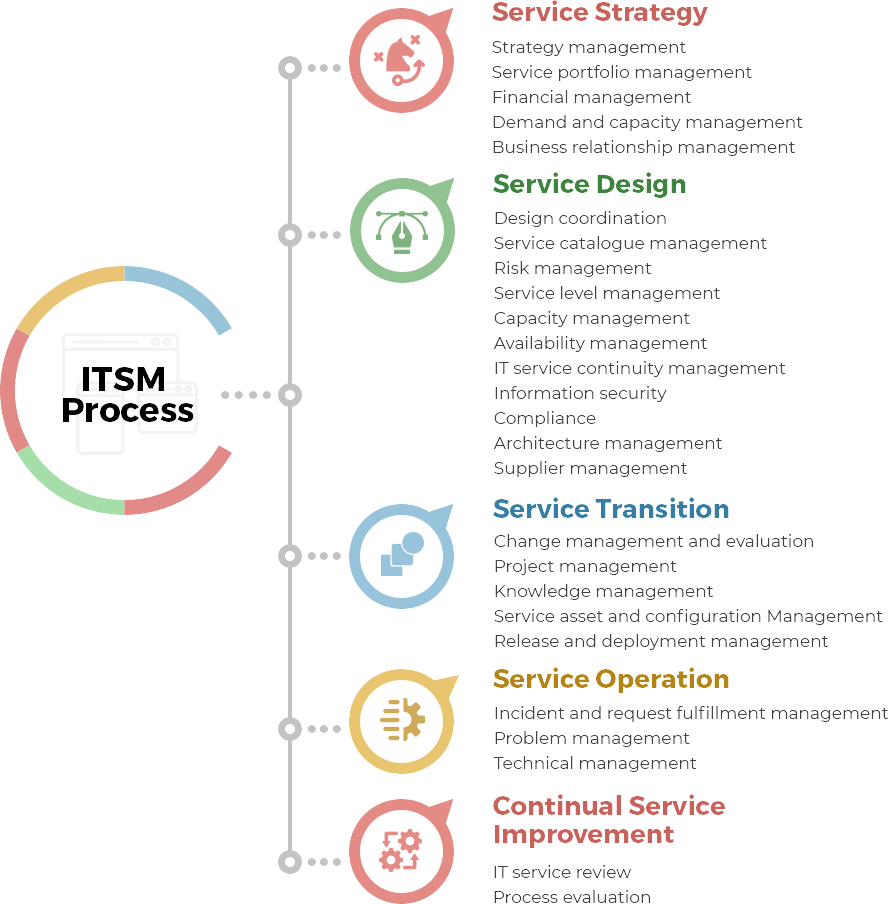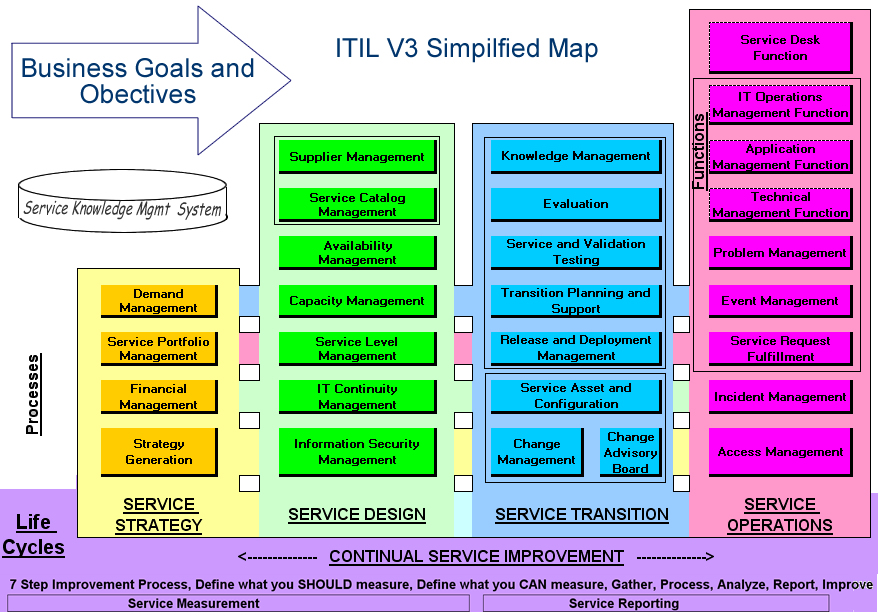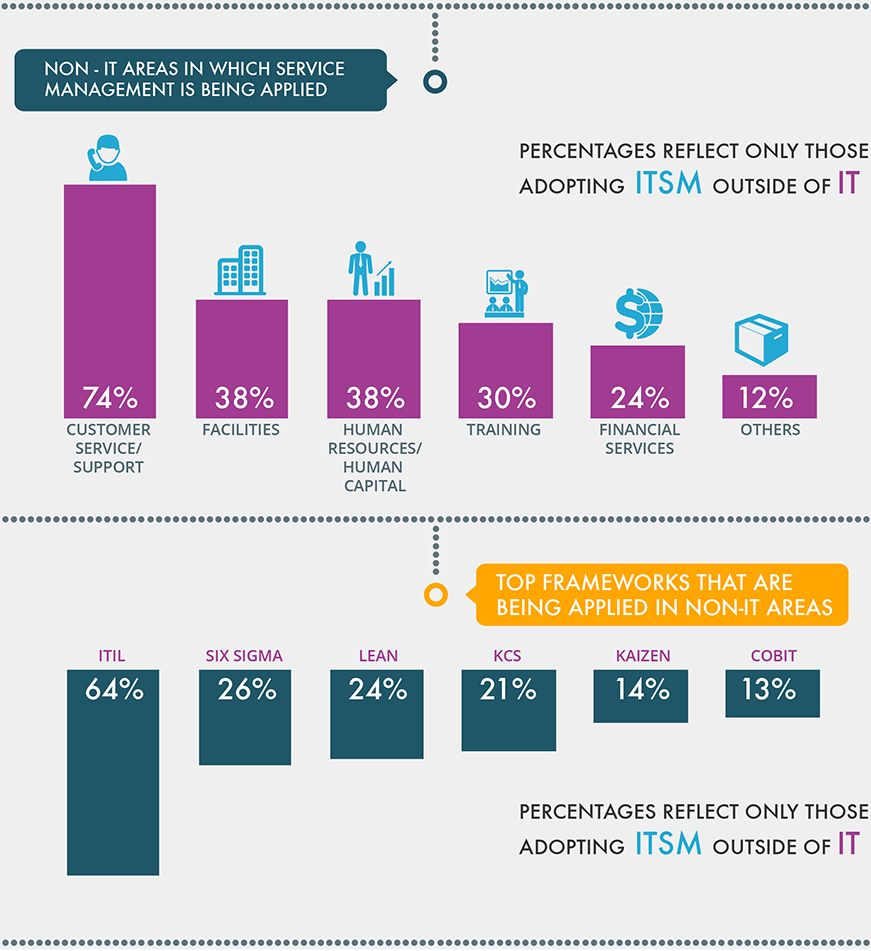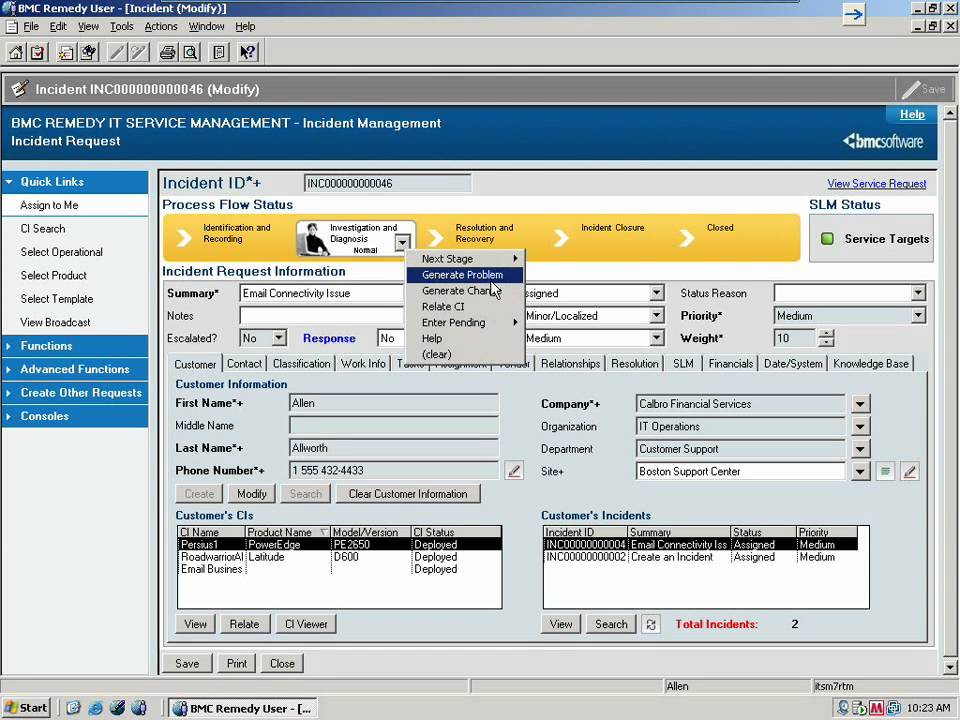Can non-IT organizations use ITIL?

What is ITIL?
According to AXELOS, the joint venture that certifies ITIL practitioners, Information Technology Infrastructure Library (ITIL) is a cohesive set of widely accepted IT Service Management (ITSM) best practices drawn from international public and private organizations. As such, ITIL is a leading ITSM framework for a set of processes and standards with an actual focus on aligning and improving IT services with business needs.
For the sake of clarity, ITSM includes all activities that involve the design, creation, delivery, support, and management of IT services.

Where is ITIL mainly used?
Although the most common interpretations of ITSM and ITIL only reference them as being useful in Information Technology (IT), ITSM and ITIL go way beyond IT companies, to help solve day-to-day issues in both IT and non-IT-based organizations. Organizations need certified professionals to implement ITIL effectively. Professionals who have an ITIL foundation certification have an opportunity to showcase their skills in such organizations and prove their worth.

Since most modern organizations heavily use IT services in one form or another, you will find that ITIL is useful in almost any organization that wants to:
- Improve governance and reduce risk
- Reduce business disruption and failure
- Build a stable business environment that enhances growth and streamlines change
- Increasing business efficiency
- Increase IT efficiency
- Improve flexibility
- Improve the quality of service
- Increase agility for new IT services
- Reduce IT wastage and reduce IT costs
- Improve customer satisfaction
- Increase competitive advantage
Examples of Non-IT Companies that Use ITIL
There are several examples of IT companies and organizations that make use of ITIL. These comprise all types of organizations including enterprise-level and SMB-level organizations. In fact, almost any IT company that you can think of can make use of ITIL. Examples include software companies like Microsoft to Telcos like British Telecom.
There are also several non-IT organizations that use ITIL. Here are a few examples of the non-IT companies/organizations that use it:
* Universities and Colleges: Yale University, Oregon State University, Ohio State University, University of Wisconsin – Madison, University of Wisconsin – Milwaukee
* US-based companies: Sony, Staples, Target, Toyota, UnitedHealth Group, Visa, Wal-Mart,Nationwide Insurance, PEMCO, Pershing, Pfizer, Procter & Gamble, Barclays Bank, Bass Breweries, BHP Billiton, BMC Remedy, Boeing, BP, Capital One, Caterpillar
* Companies/organizations from other countries: Australia Post, Müller Dairy, Bank of Canada, British Airways, Bank of Montreal, CERN, Victorian State Revenue Office (Australia), Canadian Fed. & Prov. Governments, and Ontario Justice Enterprise.
How is ITIL Beneficial for Non-IT Organizations?
Digital and IT services are not developed in a vacuum. In essence, digital/IT services are built using project management principles and processes that take into account objectives as well as the potential issues/challenges in developing, delivering and maintaining the services.
When ITIL is done the right way, it integrates all the factors that are taken into consideration for service delivery across the entire development lifecycle from requirements identification, solution creation, and design, to maintenance, continuous improvement and review of services.

Using this strategy has several benefits for all types of organizations, both IT and non-IT based, as mentioned above, including Improving governance and reduce risk, reducing business disruption and failure, building a stable business environment that enhances growth and streamlines change, increasing business efficiency, increasing IT efficiency, Increasing competitive advantage, and so on.
Here are examples of different areas/departments where ITIL aligns and benefit non-IT organizations based on ITIL best practices:

Administrative and Facilities Departments
These departments have several recurring projects and activities that involve a consistent approach. For example, organizing personnel transport like taxi’s, or AC maintenance requires a method similar to Incident Management or Service Request Fulfillment in ITIL. Also, prioritizing any organizations services while introducing new ones can easily take advantage of ITIL’s Service Portfolio Management and Service Catalog Management with some customizations. Furthermore, ITIL processes can be useful for administrative and facilities departments in workflows where automation of status notifications, regulatory reporting and approvals are involved.
Project Management Office
Any organization that utilizes a Project Management Office (PMO) including departments or teams in government agencies, enterprises, and smaller businesses can highly benefit from the utilization of customized ITIL tools and practices. Some of the ITIL concepts or processes that can be immediately customized for use in the PMO office include Service Catalog Management, Strategy Management, Service Portfolio Management, and Financial Management.
Additionally, any organization that seeks to streamline project-like activities including business expansion into new territories, product launches, and product upgrades, can benefit highly from ITIL methodologies. ITIL can also enhance organizations that make use of Change Management, Transition Planning and Support, and Release Management.
Complaint Management
ITSM/ITIL tools like ServiceNow or BMC Ready can contribute to the improvement of logging and management in the complaint management lifecycle in almost any organization where grievances or complaints need to be managed. Additionally, models like Continual Service Improvement can be designed to guarantee customer satisfaction and good employee practice. Also, concepts like Business Relationship Management (BRM) and process like Problem Management can help build stakeholder rapport and resolve problems within any organization.

Human Resource
Almost all organizations make use of activities like raising hiring requests, employee on-boarding, payroll adjustments, employee structure updates, employee dismissal, and such. These activities can highly benefit from implementing ITIL-based practices. For example, ITIL/ITSM tools like BMC Ready can be used to trigger the sending of automatic notifications to different individuals in the HR department based on their role in the department. Also, ITIL principles can be used to monitor, forecast, and fulfill employee capacity related demands.
The bottom line
According to a report by itSMF USA released in 2014, over 50% of the organizations surveyed were either using or planning to use service management principles in business areas outside of IT. The expansion of technology across all verticals has been the driving force for the adoption of ITSM and ITIL applications outside of IT. Indeed, ITIL can definitely be used in non-IT organizations, and its reach is continuously expanding as organizations continue to adopt technologies into their workflows.

